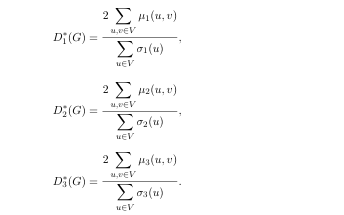General, General Weak, Anti, Balanced, and Semi-Neutrosophic Graph
Keywords:
Neutrosophic graph, Balanced-Neutrosophic Graph, General-Neutrosophic graph, Anti Neutrosophic graph, Semi-Neutrosophic graphAbstract
Graph classes categorize graphs based on shared properties or structures, and numerous such classes
have been proposed over time. In 1965, Zadeh [43] introduced a framework for managing uncertainty, which later
inspired Rosenfeld [28,31] to develop fuzzy graph theory in 1975. A Neutrosophic Graph, as a generalization
of a Fuzzy Graph, associates each vertex and edge with three membership values representing truth, indeter
minacy, and falsity. This allows Neutrosophic Graphs to handle uncertain, vague, or contradictory information
more effectively. This paper aims to expand the study of Neutrosophic Graphs by proposing new graph classes,
specifically the General-Neutrosophic Graph, Anti-Neutrosophic Graph, *-Balanced-Neutrosophic Graph, and
Semi-Neutrosophic Graph.
Downloads

Downloads
Published
Issue
Section
License
Copyright (c) 2025 Neutrosophic Sets and Systems

This work is licensed under a Creative Commons Attribution 4.0 International License.







